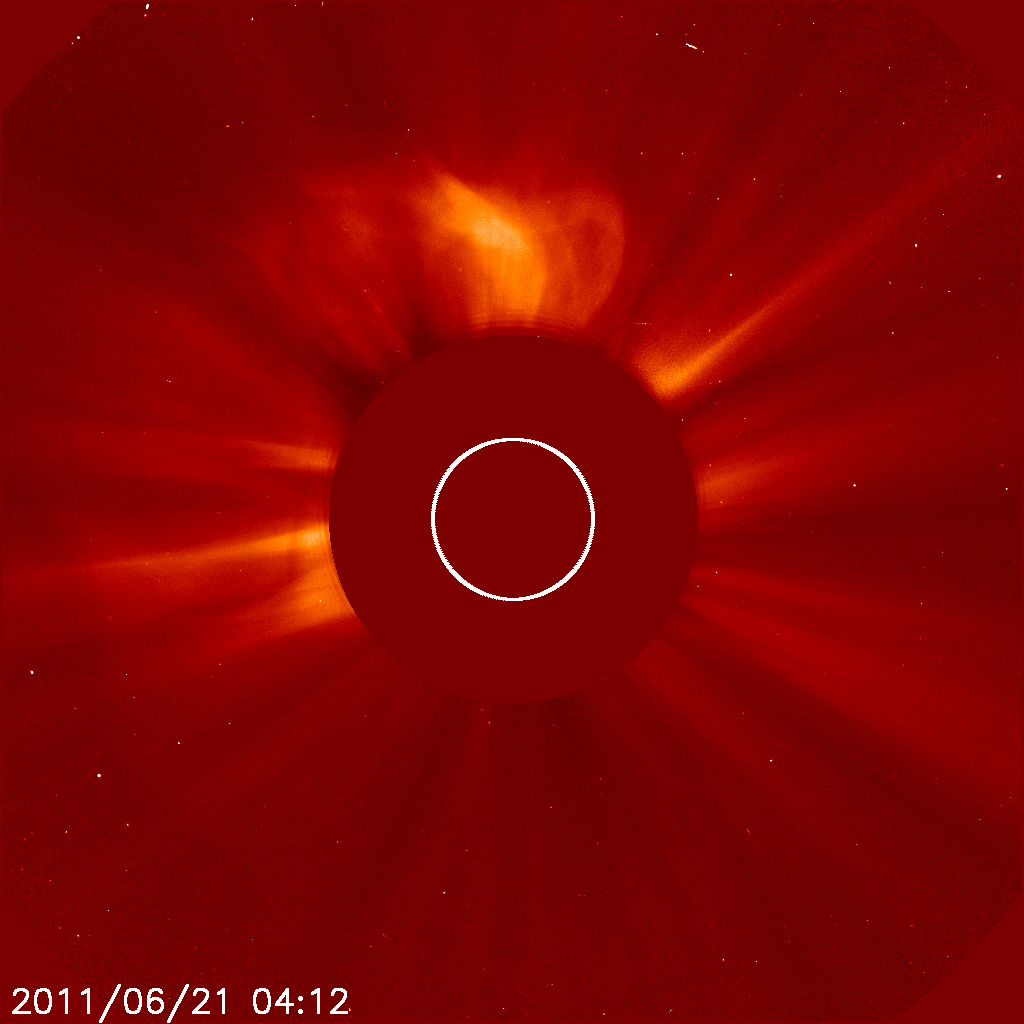Simmering Sun: Summer Solstice Starts with Solar Storm

The sun unleashed a powerful solar flare and eruption Tuesday (June 21) just in time for the summer solstice: the first day of the summer in Earth's Northern Hemisphere.
The solstice solar storm occurred in the early hours of Tuesday and was spotted by the space-based Solar and Heliospheric Observatory (SOHO) operated by NASA and the European Space Agency, according to the website Spaceweather.com, which monitors space weather and skywatching events.
Spaceweather.com officials said a moderate C7-class solar flare kicked off the solar storm and triggered a massive eruption of plasma, known as a coronal mass ejection. [Amazing Sun Photos From Space]
"Magnetic fields above sunspot complex 1236 erupted during the early hours of June 21st, hurling a coronal mass ejection (CME) almost directly toward Earth," Spaceweather.com stated in an alert. "The incoming CME does not appear to be particularly potent; nevertheless, the cloud could trigger polar geomagnetic storms when it reaches Earth on or about June 23rd."
In one SOHO image from about 12:12 a.m. EDT (0412 GMT), the eruption can be see streaming out from the sun near the top of the frame, appearing like a bright crown over the star. The event coincided with the summer solstice on Earth — a time when the sun is at its most northern point in the sky — which mark's the start of summer in the Northern Hemisphere, as well as the first day of winter in the Southern Hemisphere.
Class C7 solar flares are the least powerful type of flares. The more-powerful M-class solar flares are classified as medium-strength events, with intense X-Class flares topping the solar storm list.
Coronal mass ejections are massive eruptions of charged particles and solar material from the sun's surface. Some of these particles are blown out into space, while others can rain back down onto the sun's surface.
Get the Space.com Newsletter
Breaking space news, the latest updates on rocket launches, skywatching events and more!
Earlier this month on June 7, the sun experienced a massive coronal mass ejection on a scale that stunned NASA scientists. That eruption was spawned by an M2-class solar flare.
When coronal mass ejections are aimed at Earth, the charged particles they spew can interact with the planet's magnetic field to create dazzling auroras in polar regions. Extremely powerful solar storms can pose a danger to satellites and astronauts in space, as well as affect communications and power systems on the Earth's surface.
The sun is currently in an active period of its 11-year solar weather cycle, with NASA and other space and weather agencies keeping a close watch on its activity with satellites and space-based observatories such as SOHO.
You can follow SPACE.com Managing Editor Tariq Malik on Twitter @tariqjmalik. Follow SPACE.com for the latest in space science and exploration news on Twitter @Spacedotcom and on Facebook.
Join our Space Forums to keep talking space on the latest missions, night sky and more! And if you have a news tip, correction or comment, let us know at: community@space.com.

Tariq is the Editor-in-Chief of Space.com and joined the team in 2001, first as an intern and staff writer, and later as an editor. He covers human spaceflight, exploration and space science, as well as skywatching and entertainment. He became Space.com's Managing Editor in 2009 and Editor-in-Chief in 2019. Before joining Space.com, Tariq was a staff reporter for The Los Angeles Times covering education and city beats in La Habra, Fullerton and Huntington Beach. In October 2022, Tariq received the Harry Kolcum Award for excellence in space reporting from the National Space Club Florida Committee. He is also an Eagle Scout (yes, he has the Space Exploration merit badge) and went to Space Camp four times as a kid and a fifth time as an adult. He has journalism degrees from the University of Southern California and New York University. You can find Tariq at Space.com and as the co-host to the This Week In Space podcast with space historian Rod Pyle on the TWiT network. To see his latest project, you can follow Tariq on Twitter @tariqjmalik.


